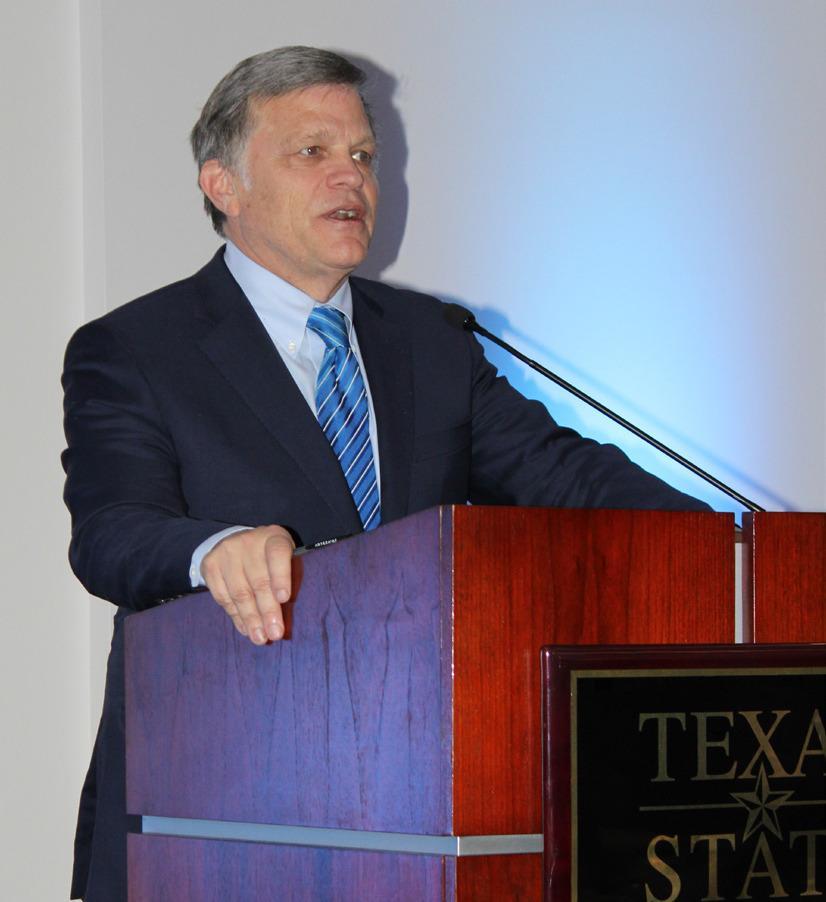
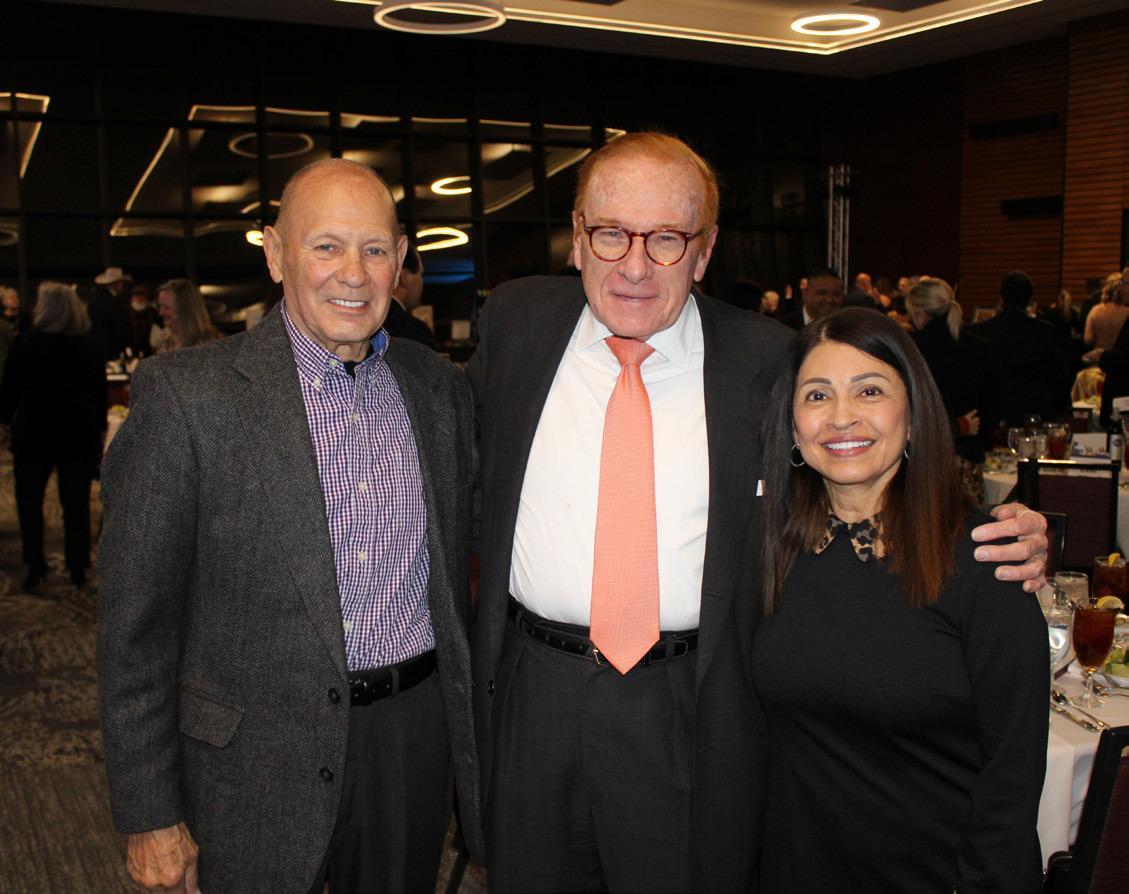
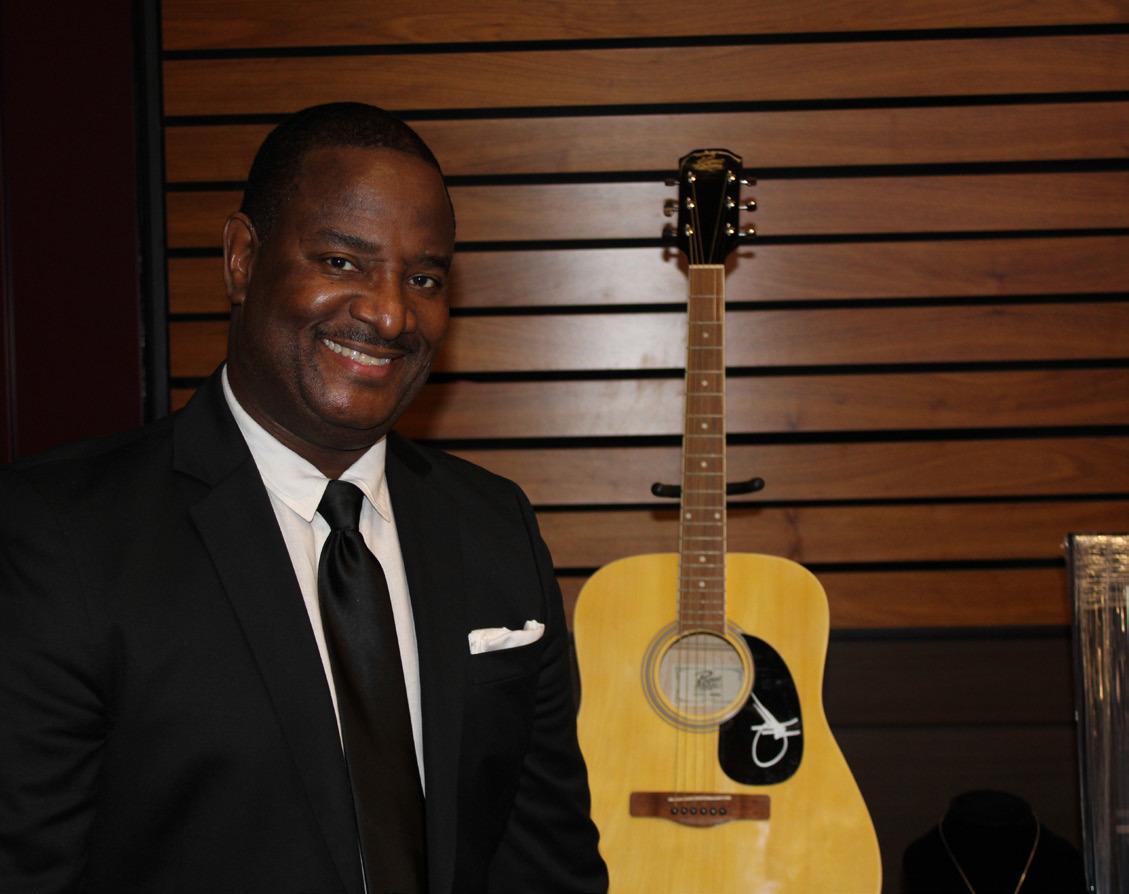
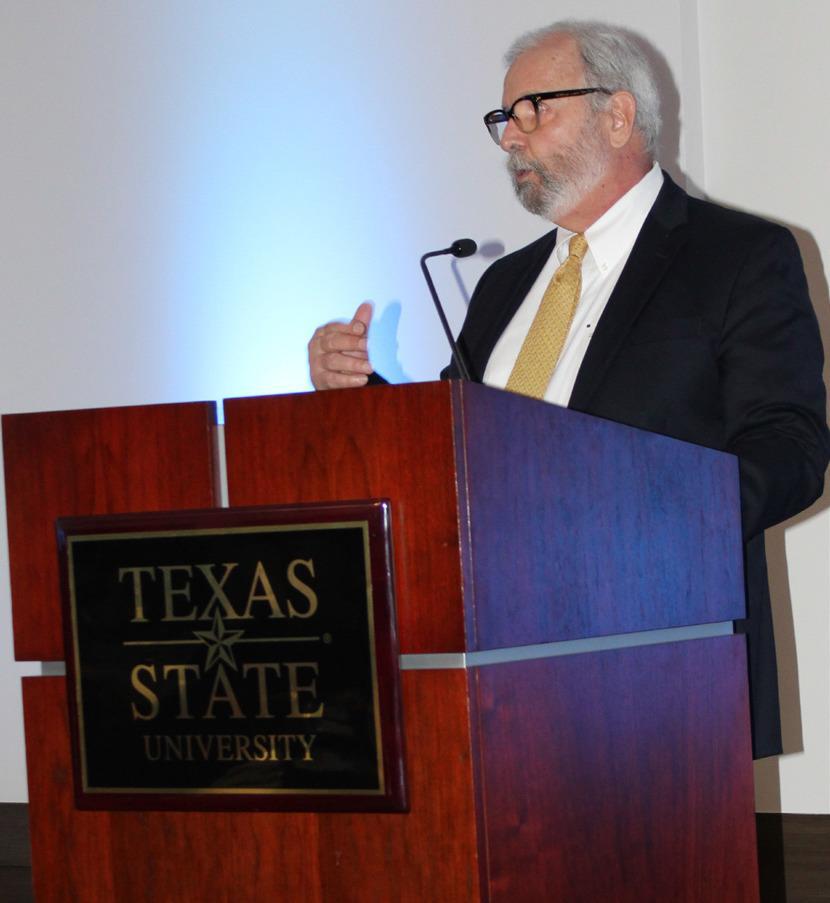
Top left, Douglas Brinkley — a presidential historian who has received seven honorary doctorates in American Studies and has had six of his books named Notable Books of the Year by the New York Times, spoke at the event about the conservation legacy. Top right, Garry Ingalsbe, Jon Leonard and Hays County Commissioner Debbie Gonzales Ingalsbe. Bottom left, Chris Tyson, CEO of Tyson Fundraising which facilitated the silent auction. Bottom right, LBJ Museum President Wayne Kraemer.
Daily Record photos by Shannon West
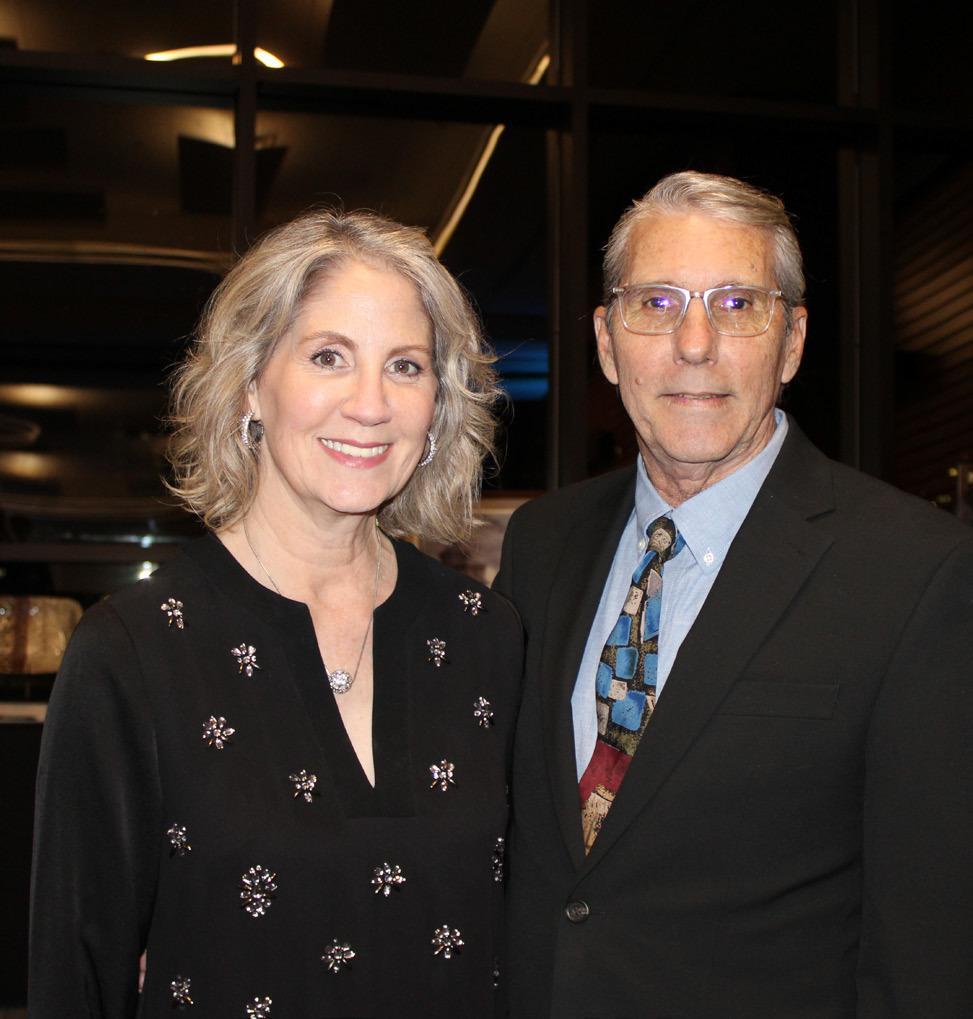
San Marcos Chamber of Commerce President Page Michel and Vince Michel.
Daily Record photo by Shannon West
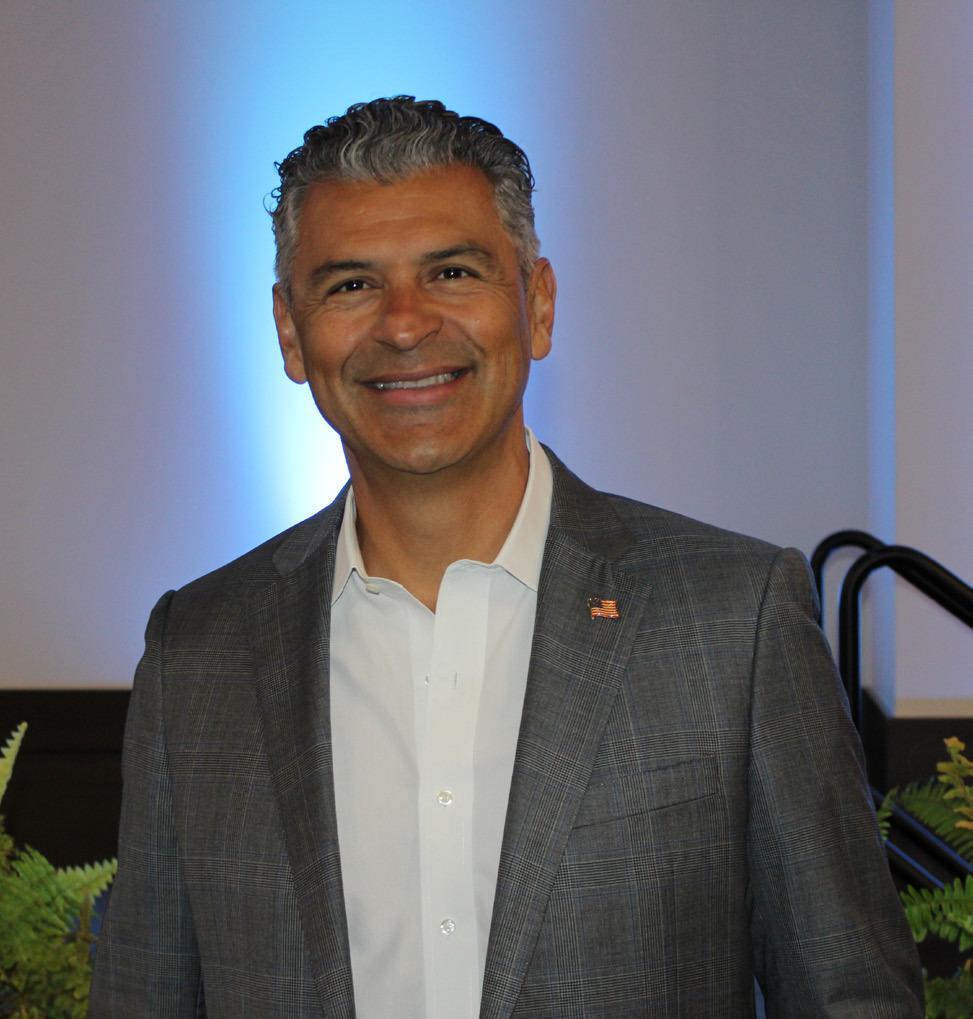
Hays County Judge Ruben Becerra.
Daily Record photo by Shannon West
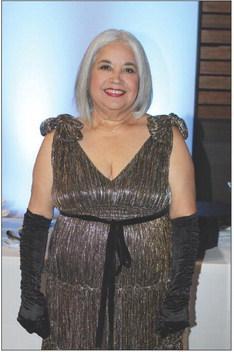
LBJ Museum Vice President Linda Rodriguez
Daily Record photo by Shannon West
CONSERVING LBJ
LBJ Museum Benefit Gala features presidential historian Douglas Brinkley
The LBJ Museum of San Marcos Benefit Gala was an opportunity to hear about the indelible mark that former U.S. President Lyndon Baines Johnson’s time in office made on the United States, particularly his conservation legacy.
Presidential Historian Douglas Brinkley said that conservation began with other presidents, but Johnson’s “productivity in this realm equals FDR” while only serving one term.
The Texas State University LBJ Student Grand Ballroom was filled with community members from the university president along with leaders from both the political, civic and business community.
The night consisted of a seated dinner, music by the Texas State Quartet, a silent auction and Brinkley’s speech.
According to the LBJ Museums website, the museum got its start in the commissioners court. Hays County Commissioners gave unanimous approval to an agreement that allowed the museum board to lease an abandoned movie theater on the square that was owned by the county for 30 years for a nominal fee on Feb. 22, 1998. In 2004 the lease was extended to 50 years. In that time, the exhibit has grown, and the museum has incorporated more offerings such as free learning opportunities for the community.
LBJ Museum Board President Wayne Kraemer said the exhibits at the museum generally focus on the years that Lyndon Baines Johnson spent at Texas State and the legislation he created based off of those experiences.
“It’s kind of a hidden gem on the square,” Kraemer said. “We get a lot of visitors who didn’t know the museum was there, but once they go through … were really impressed by the offerings that we have.”
In line with the museum theme, Brinkley’s speech at the gala focused on the conservation aspects of LBJ’s tenure. Brinkley is a presidential historian who has received seven honorary doctorates in American Studies and has had six of his books named Notable Books of the Year by the New York Times.
Brinkley said it was a president from 10 administrations prior that set the stage for LBJ's environmentally conscious tenure.
“Everything conservation began with Theodore Roosevelt, and LBJ would agree with that,” Brinkley said. “Today all of you here own 550 National Wildlife Refuges in the U.S. Fish and Wildlife, and it’s born with TRs first 51.”
Brinkley said that LBJ grew up loving the Texas hill country.
“His idea of conservation was about land stewardship, how somebody who has a ranch takes care of their property,” Brinkley said. “But Lady Bird coming from the big thicket area, the Louisiana [and] Texas border, she was a naturalist at heart from childhood on. … And that marriage between Lyndon and Lady Bird is consequential because together as a team they both elevated conservation in a very large way in the 1960s. And we’re all beneficiaries of it.”
Brinkley said the president and first lady did great things for beautification, conservation and national parks. Out of his presidency came Canyonlands National Park in Utah, Guadalupe National Park in Texas, Big Thicket National Preserve in Texas, Redwoods National Park in California and the North Cascades National Park in Washington, as well as many preserved islands and dunes. They also kickstarted the environmental justice movement, focusing on the impacts of certain environmental activities on public health.
“Johnson got the first Clean Air Act passed in Dec. 1963, which created standards for pollution that’s acceptable for human health from stationary sources, meaning factories,” Brinkley said, adding that LBJ and Lady Bird were also champions for declining animal species. “It’s Lyndon Johnson that created the first endangered species act.”
Brinkley said during 1968, his last full year in office, Johnson was working the conservation front nonstop.
“He pushes through and creates our nation's Wild and Scenic River System,” Brinkley said. “It’s the first time we were giving the love, respect, protection [and] preservation of our rivers. That they just weren’t sewage canals or places to navigate barges or ships. That they were places that had a kind of holy reverence to what we consider ‘America the Beautiful.’” Though rivers were not the only natural resource LBJ and Lady Bird protected that year.
“Johnson creates our National Trail System and saves the Appalachian Trails, the Pacific Coast Trail [and] all of western trails that we have,” Brinkley said. “She (Lady Bird Johnson) goes places, as you know, [speaking] on beautification and talking about planting wildflowers [and] keeping our highways litter free. Historic Preservation of places like San Antonio and New Orleans were big for Lady Bird Johnson. She would go to northern California and say, ‘don’t ruin Pacific Coast Hwy. 1. Stop the vulgarity of the American Roadside.’” If one is interested in learning more about the historian himself and the various books he’s written, that information can be found on his website at douglasbrinkley.com.











